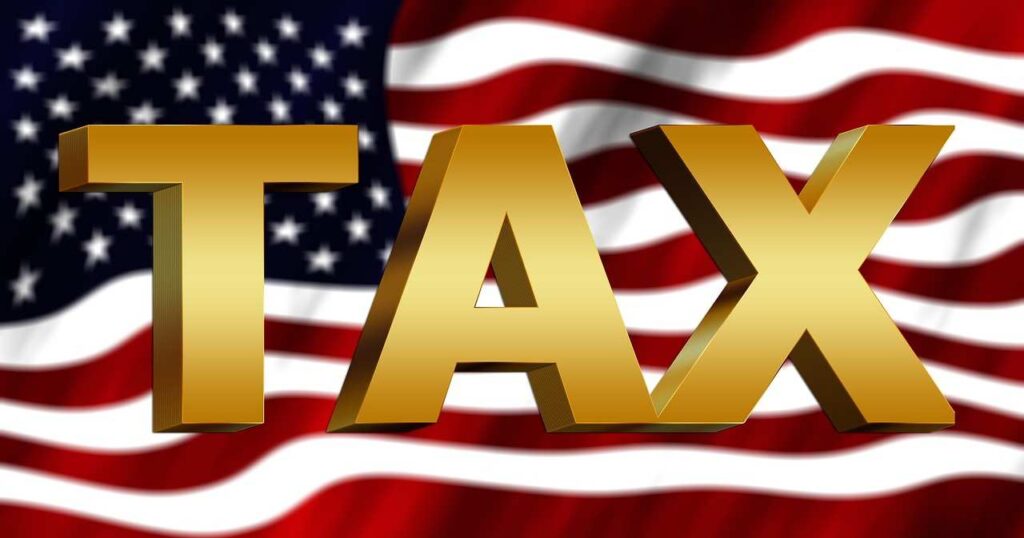As a small business mentor, I often discuss how money flows through a business, and the effects it has on income taxes. Inevitably, the discussion descends into the use of various federal tax forms and schedules. Of course, not all tax forms are required by every business, and many are required only for specific entities and in specific situations. In fact, you should seek advice from your CPA on your own personal income tax situation.
While the following list is not intended to be an exhaustive list of tax forms and schedules, here are some of the most common tax forms and schedules that you are likely to encounter as a small business owner.
Forms Used to Set Up a New Business
If you are simply a sole proprietor or a single-member Limited Liability Company (LLC) working in the gig economy with no employees, most of what is covered here is overkill. In most cases, you will only need to add a Schedule C and Schedule 1 to your Form 1040 to report your income and expense, using your Social Security Number (SSN) as your tax ID. However, if you are a partnership or have investors, then the rest of this post will serve as a handy reference to the many tax-related forms that you will likely be exposed to.
Form SS-4 (Application for Employee ID Number)
If you are creating a separate business entity, such as an LLC or a corporation with your Secretary of State, you may want to obtain a separate Tax ID Number (TIN) for the entity. A TIN is also often called an EIN (Employee Identification Number).
If you are a single-member entity (LLC or S-Corp) with no employees, you can still use your social security number as your tax ID if you choose but you can also obtain a separate tax ID. To obtain a separate tax ID for a business, you will need to file a Form SS-4 and submit it to the IRS for approval. Once approved, the IRS will issue a tax ID that the business will use for tax purposes. A tax ID is like an SSN for a business so that the IRS and other taxing jurisdictions have a way of filtering out all records that apply to a specific business. The application process is free, but the expectation from the IRS is that if a business has a tax ID, they will expect a tax return.
Form 2553 (Election by a Small Business Corporation)
If your entity is a corporation, the default is a C-Corp. A C-Corp is the only business entity that pays taxes directly to the IRS. All other entities are what are known as pass-through entities and will only file informational tax returns. The partners, members, or shareholders of pass-through entities will pay income taxes to the IRS based on their own particular situations. However. if your desire is to have a corporation (Corporations differ from all the other entity types in that they issue shares of stock) that issues shares to its stockholders but prefers to be taxed as a pass-through entity, you will need to file a Form 2553 with the IRS to elect Subchapter S status under the Internal Revenue Code.
Forms Used to Shift the Tax Burden
The expenses of a business lowers its tax burden. However, the expenses incurred by one business represent revenue to another. When your business has an expense that it paid to a contractor or freelancer, in most cases you are required to report the tax ID of the freelancer or contractor and the annual amount paid to the IRS to claim the deduction.
Form W-9 (Request for Taxpayer Identification Number and Certification)
When you need to report that you paid someone or some business but don’t know the other party’s tax ID, you can use a Form W-9 to obtain the information. A Form W-9 is a form you send to the other party to request their tax information so you can use the information to send them a Form 1099-MISC to report the payments you made to them. A Form W-9 requests the name, address, and tax ID number of a taxpayer. The Form W-9 is completed by the other party and returned to you. The Form W-9 is an internal form and is never sent to the IRS, however, it should be maintained as part of your records for verification purposes.
Form 1099-MISC (Miscellaneous Income)
Contractors and freelancers will probably be familiar with receiving a Form 1099-MISC from their clients. A Form 1099-MISC is used to report non-employee compensation. If your business used the services of a freelancer or a contractor that exceeded $600 during the tax year, you must issue them a Form 1099-MISC. However, if the services were performed by a corporation, the business is often not required to issue a Form 1099-MISC to the corporation.
The company is required to send their Form 1099-MISC to the contractor or freelancer and the IRS on or before January 31.
Related Post: How to Avoid Misclassifying an Employee as an Independent Contractor
NOTE: Starting in tax year 2020 (reporting year 2021), the IRS will be using a Form 1099-NEC for non-employee compensation.
Form 1096 (Annual Summary and Transmittal of U.S. Information Retunes)- Paper File Only
Most of the time, Form 1099-MISCs are completed using an online platform such as QuickBooks, TurboTax, or Tax1099. The platform then sends the Form 1099-MISC to the contractor or freelancer and directly to the IRS.
If you choose to mail paper copies of Form 1099-MISC to freelancers and contractors, you will need to send copies of each Form 1099-MISC to the IRS, along with a Form 1096 to the IRS on or before January 31.
Forms Used When You Have Employees
When you have employees, there are a few forms you will need to verify they have the right to work in the U.S., collect their tax information, and report their wages and withholdings to the IRS and Social Security Administration.
Form I-9 (Employee Eligibility Verification)
Form I-9 is a United States Citizenship and Immigration Services form. Mandated by the Immigration Reform and Control Act of 1986, a Form I-9 is used to verify the identity and legal authorization of a person to work in the United States. All employers must ensure proper completion of Form I-9 for each individual they hire as an employee.
Included with the completed Form I-9, the employee must also present acceptable documents such as proof of identity and employment authorization. The business is responsible to examine the Form I-9 and supporting documents to determine if they are genuine and relate to the employee and record the document information on the Form I-9. The list of acceptable documents can be found on the Form I-9 itself. The business does not need to send the I-9 form to any government entity. However, the business must retain the Form I-9, plus copies of the acceptable documents used for verification in the employee’s records and make them available for inspection by authorized government officials if they are requested.
Form W-4 (Employee’s Withholding Allowance Certificate)
Employees will probably be familiar with completing a Form W-4 for their employer. A Form W-4 is an IRS tax form completed by an employee before starting their employment to indicate their specific tax situation to the employer. A Form W-4 tells the employer the amount of tax the employee wishes to have withheld from their paycheck.
Form W-2 (Wage and Tax Statement)
A Form W-2 is the form that anyone who works as an employee should also be familiar with. Businesses with employees who earned more than $600 in a tax year are required to issue W-2 forms to their employees. The W-2 form needs to be filed for every employee for whom wages were paid and Federal and State income taxes, as well as Social Security and or Medicare tax, were withheld. The company is required to send out W-2 forms to the employee on or before January 31.
Form W-3 (Transmittal of Wages and Tax Statements)
Form W-2s are often completed and transmitted electronically from your accounting platform such as QuickBooks. In other cases, a business may use a payroll service, such as ones offered by many banks or platforms like Paychex. When this is the case, the platform sends the Form W-2 to the employee and prepares a W-3 that is sent directly to the Social Security Administration.
However, if you choose to deliver paper copies of Form W-2 to your employees, you will also need to mail copies of all employee’s Form W-2 to the Social Security Administration, plus a Form W-3 to Social Security Administration, which is the sum total of all W-2s. The company is required to send out W-3 forms to the Social Security Administration on or before January 31.
Related Posts:
Why Your Business Absolutely Needs an Employee Handbook
Why You Need to Have a Job Description
What You Need to Know Before Hiring an Employee
What You Need to Know Before Firing an Employee
End of Year Business Informational Tax Return Forms
NOTE: If you are a sole proprietorship or a single-member LLC, there is no need for a separate informational return. You simply record your income and expenses on your Schedule C. You will then record your net profit or loss from the Schedule C to your Schedule 1 that ultimately feeds to your Form 1040.
If the business has partners, investors, or shareholders, the business will need to produce an informational return.
Form 1065 (U.S. Return of Partnership Income)
A Form 1065 is how business partnerships report their financial information to the IRS. Partnerships do not pay taxes directly to the IRS. However, since there is more than one partner, the business must file a Form 1065 informational return.
Partnerships are “pass-through” entities, meaning their profits and losses pass through directly to their owners. Form 1065 is a tax document used to declare the profits, losses, deductions, and credits of a business. The partners must report and pay taxes on their share of income from the partnership on their personal tax return.
NOTE: Just to be clear- partners must pay income tax on their share of the company’s profits, however, the business is not required to distribute its profits to the partners. Generally, a business will at least distribute some of its profits to the partners so they can use the distributions to pay their individual income tax liability.
Schedule K-1 (Partner’s Share of Income, Deductions, Credits, etc.)
Since a partnership is a pass-through entity, they only complete informational tax returns. With a pass-through entity, the tax liability is passed to the business owners. When an owner’s share of the company’s profits is more than $600, the company must issue the partner a Schedule K-1 to report their share of the company’s profits, losses, deductions, and credits. Schedule K-1s are issued annually to report each partner’s share of the partnership’s earnings, losses, deductions, and credits.
Schedule B-1 (Information on Partners Owning 50% or More of the Partnership)
Majority partners who own 50% or more of a partnership are issued a Schedule B-1 rather than a Schedule K-1.
NOTE: Be aware that a K-1 and B-1 for a partnership is different than a K-1 or B-1 used for a subchapter S corporation.
Form 1120 (U.S. Corporation Income Tax Return)
A Form 1120 is a tax return form used by regular corporations. Regular corporations are often referred to as C-Corps and are different that subchapter S corporations, often referred to as S-Corps. A regular corporation is not the same as a partnership. Regular corporations are not pass-through entities and pay corporate taxes based on the Federal corporate tax rate. The Tax Cuts and Jobs Acts of 2017 set the corporate tax rate at 21%. Regular corporations report their income, losses, and dividends paid to shareholders on a Form 1120 to the IRS.
Form 1099-DIV (Dividends and Distributions)
Unlike pass-through entities that pass the tax burden to partners and shareholders, a regular corporation pays taxes to the IRS. When a regular corporation shares some of its earnings with its shareholders, it does so by issuing dividends. The dividends that a regular corporation pays to shareholders in excess of $10 are reported on a Form 1099-DIV. 1099-DIVs are issued annually to shareholders to report the dividends received.
NOTE: The term “Dividend” refers to a payment made by a regular corporation, while the term “Distribution” refers to a payment made by a subchapter S corporation or partnership.
Form 1120S (U.S. Income Tax Return for an S Corporation)
Subchapter S corporations are corporations that have elected to be taxed as a partnership, and therefore, must file a Form 1120S informational tax return with the IRS. A Form 1120S is how a subchapter S corporation reports its income, losses, and dividends paid to shareholders.
Schedule K-1 (Shareholder’s Share of Income, Deductions, Credits, etc.)
Since a subchapter S corporation is a pass-through entity, they complete informational tax return only. With a pass-through entity, the tax liability is passed to the business owners. When an owner’s share of the company’s profits is more than $600, the company must issue the shareholder a Schedule K-1 to report their share of the company’s profits, losses, deductions, and credits. Schedule K-1s are issued on or before January 31.
Schedule B-1 (Information on Certain Shareholders of an S Corporation)
Majority partners owning 50% or more of the subchapter S corporation are issued a Schedule B-1 rather than a Schedule K-1.
NOTE: Be aware that a K-1 and B-1 for a subchapter S corporation is different than a K-1 or B-1 used for a partnership.
Special Business-Related Tax Forms
H3 Form 4562 (Depreciation and Amortization)
When you purchase property to use for a business, the IRS doesn’t allow you to claim the full cost as a business deduction during its first year. However, the business can deduct a portion of its costs each year by claiming a depreciation deduction and reporting it on Form 4562. The amount the business can deduct on Form 4562 will vary depending on the IRS estimated useful life for each piece of property.
Form 8829 (Expense for Business Use of Your Home)
One of the many benefits of being a freelancer or having a side hustle is that you can deduct legitimate home office expenses for a dedicated home office on your Schedule C. The downside is that since home office tax deductions are so easily abused, the Internal Revenue Service (IRS) tends to scrutinize them more closely than other parts of your tax return. However, if you are able to substantiate your home office deductions, you shouldn’t be afraid to claim them. IRS Form 8829 helps you determine what you can and cannot claim.
End of Year Tax Return Forms for Individuals
As of the 2019 tax year, if you are an individual with net earnings over $12, 200, or married with net earnings over $24, 400, you are required to file a tax return.
Form 1040 (U.S. Individual Income Tax Return)
Form 1040, also known as the “long-form” 1040 because it’s extremely comprehensive, is one of the primary tax forms that individual U.S. taxpayers use to file their annual income tax return. The Form 1040 is divided into sections where you can report your income and deductions to determine the amount of tax you owe or the refund you can expect to receive. Depending on the type of income and expenses you report, it may be necessary to attach other forms or schedules to it.
Schedule 1 (Additional Income and Adjustments to Income)
The Tax Cuts and Jobs Acts of 2017 simplified the Form 1040. With the elimination of many reporting lines on the old Form 1040, the act added Schedule 1 to report income and deductions no longer on the Form 1040. The sum total of adjustments to your income is then passed to the revised Form 1040.
Schedule SE (Self-Employment Tax)
Schedule SE is the form used by individual taxpayers to figure the amount owed in self-employment tax. If you are self-employed and had net earnings from self-employment totaling more than $400, your Form 1040 must include a Schedule SE. The Social Security Administration uses the information from Schedule SE to figure your benefits under the social security program. This tax applies no matter how old you are, even if you’re already getting social security or Medicare benefits.
Schedule C (Profit Loss from Business)
A Schedule C is used by businesses with just one owner. These businesses are often referred to as a Disregarded Entity. The Schedule C is a place to report the revenue from the business, as well as all the expenses incurred in running the business. Your business income minus your business expenses is your net profit (or loss). You then report your net profit from the Schedule C as income on your Schedule 1.
Schedule E (Supplemental Income and Loss)
If you earn rental income on a home or building, receive royalties, or have income reported on a Schedule K-1 from a partnership or subchapter S corporation, then you must prepare a Schedule E with your tax return. A Schedule E has several sections to report income and expenses from real estate and royalties, in addition to income or losses from partnerships or subchapter S corporations. The total income or losses from the Schedule E are reported on your Schedule 1.
How can you use this handy reference to better understand your tax reporting responsibilities?












